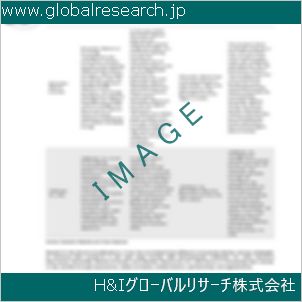1 報告の範囲
1.1 市場概要
1.2 対象期間
1.3 研究目的
1.4 市場調査手法
1.5 研究プロセスとデータソース
1.6 経済指標
1.7 対象通貨
1.8 市場推計の留意点
2 執行要約
2.1 世界市場の概要
2.1.1 グローバルな低粘度および超低粘度HDIベースのポリイソシアネート年間販売量(2020年~2031年)
2.1.2 地域別低粘度および超低粘度HDI系ポリイソシアネートの世界市場動向(2020年、2024年、2031年)
2.1.3 低粘度および超低粘度HDI系ポリイソシアネートの国・地域別市場動向(2020年、2024年、2031年)
2.2 低粘度および超低粘度HDI系ポリイソシアネートセグメント(タイプ別)
2.2.1 低粘度
2.2.2 超低粘度
2.3 低粘度および超低粘度HDI系ポリイソシアネートの販売量(タイプ別)
2.3.1 グローバル低粘度および超低粘度HDI系ポリイソシアネート販売市場シェア(タイプ別)(2020-2025)
2.3.2 グローバル低粘度および超低粘度HDI系ポリイソシアネートの売上高と市場シェア(2020-2025年)
2.3.3 グローバル低粘度および超低粘度HDI系ポリイソシアネート販売価格(種類別)(2020-2025)
2.4 低粘度および超低粘度HDI系ポリイソシアネートセグメント別用途別
2.4.1 コーティング
2.4.2 インク
2.4.3 その他
2.5 低粘度および超低粘度HDI系ポリイソシアネートの用途別販売量
2.5.1 グローバル低粘度および超低粘度HDI系ポリイソシアネート販売市場シェア(用途別)(2020-2025)
2.5.2 グローバル低粘度および超低粘度HDI系ポリイソシアネート売上高と市場シェア(用途別)(2020-2025)
2.5.3 低粘度および超低粘度HDI系ポリイソシアネートの販売価格(用途別)(2020-2025)
3 グローバル企業別
3.1 グローバル低粘度および超低粘度HDI系ポリイソシアネート企業別内訳データ
3.1.1 グローバル低粘度および超低粘度HDI系ポリイソシアネートの企業別年間売上高(2020-2025)
3.1.2 グローバル低粘度および超低粘度HDI系ポリイソシアネートの販売市場シェア(企業別)(2020-2025)
3.2 グローバル低粘度および超低粘度HDI系ポリイソシアネートの年間売上高(2020-2025年)
3.2.1 グローバル低粘度および超低粘度HDI系ポリイソシアネート売上高(企業別)(2020-2025)
3.2.2 グローバル低粘度および超低粘度HDI系ポリイソシアネート売上高市場シェア(企業別)(2020-2025)
3.3 グローバル低粘度および超低粘度HDI系ポリイソシアネート販売価格(企業別)
3.4 主要メーカーの低粘度および超低粘度HDI系ポリイソシアネート生産地域分布、販売地域、製品タイプ
3.4.1 主要メーカーの低粘度および超低粘度HDIベースポリイソシアネート製品立地分布
3.4.2 主要メーカーの低粘度および超低粘度HDI系ポリイソシアネート製品ラインナップ
3.5 市場集中率分析
3.5.1 競争環境分析
3.5.2 集中率(CR3、CR5、CR10)および(2023-2025)
3.6 新製品と潜在的な新規参入企業
3.7 市場M&A活動と戦略
4 地域別低粘度および超低粘度HDI系ポリイソシアネートの世界歴史的動向
4.1 世界低粘度および超低粘度HDI系ポリイソシアネート市場規模(地域別)(2020-2025)
4.1.1 地域別低粘度および超低粘度HDI系ポリイソシアネートの年間売上高(2020-2025)
4.1.2 地域別低粘度および超低粘度HDI系ポリイソシアネートの年間売上高(2020-2025年)
4.2 世界低粘度および超低粘度HDI系ポリイソシアネート市場規模(国/地域別)(2020-2025年)
4.2.1 グローバル低粘度および超低粘度HDI系ポリイソシアネート年間売上高(地域別)(2020-2025)
4.2.2 グローバル低粘度および超低粘度HDI系ポリイソシアネート年間売上高(国/地域別)(2020-2025)
4.3 アメリカズ 低粘度および超低粘度HDI系ポリイソシアネート販売成長率
4.4 アジア太平洋地域(APAC)の低粘度および超低粘度HDI系ポリイソシアネートの販売成長
4.5 ヨーロッパの低粘度および超低粘度HDI系ポリイソシアネート売上高成長率
4.6 中東・アフリカ地域 低粘度および超低粘度HDI系ポリイソシアネートの売上高成長率
5 アメリカ
5.1 アメリカ大陸の低粘度および超低粘度HDI系ポリイソシアネート販売量(国別)
5.1.1 アメリカ低粘度および超低粘度HDI系ポリイソシアネート販売量(国別)(2020-2025)
5.1.2 アメリカ大陸 低粘度および超低粘度HDI系ポリイソシアネート売上高(国別)(2020-2025)
5.2 アメリカ大陸における低粘度および超低粘度HDI系ポリイソシアネートの販売量(2020-2025年)
5.3 アメリカ大陸における低粘度および超低粘度HDI系ポリイソシアネートの販売量(2020-2025年)
5.4 アメリカ合衆国
5.5 カナダ
5.6 メキシコ
5.7 ブラジル
6 アジア太平洋
6.1 APAC地域別低粘度および超低粘度HDI系ポリイソシアネート販売量
6.1.1 APAC地域別低粘度および超低粘度HDI系ポリイソシアネート販売量(2020-2025)
6.1.2 APAC地域における低粘度および超低粘度HDI系ポリイソシアネートの売上高(2020-2025年)
6.2 アジア太平洋地域(APAC)における低粘度および超低粘度HDI系ポリイソシアネートの販売量(2020-2025年)
6.3 アジア太平洋地域(APAC)の低粘度および超低粘度HDI系ポリイソシアネート販売量(2020-2025年)
6.4 中国
6.5 日本
6.6 韓国
6.7 東南アジア
6.8 インド
6.9 オーストラリア
6.10 中国・台湾
7 ヨーロッパ
7.1 ヨーロッパ低粘度および超低粘度HDI系ポリイソシアネート(国別)
7.1.1 ヨーロッパ 低粘度および超低粘度HDI系ポリイソシアネート販売量(国別)(2020-2025)
7.1.2 ヨーロッパ 低粘度および超低粘度HDI系ポリイソシアネートの売上高(国別)(2020-2025)
7.2 ヨーロッパの低粘度および超低粘度HDI系ポリイソシアネート販売量(タイプ別)(2020-2025)
7.3 欧州 低粘度および超低粘度HDI系ポリイソシアネートの販売量(2020-2025年)
7.4 ドイツ
7.5 フランス
7.6 イギリス
7.7 イタリア
7.8 ロシア
8 中東・アフリカ
8.1 中東・アフリカ 低粘度および超低粘度HDI系ポリイソシアネート(国別)
8.1.1 中東・アフリカ地域における低粘度および超低粘度HDI系ポリイソシアネートの国別販売量(2020-2025)
8.1.2 中東・アフリカ地域における低粘度および超低粘度HDI系ポリイソシアネートの売上高(国別、2020-2025年)
8.2 中東・アフリカ地域における低粘度および超低粘度HDI系ポリイソシアネートの販売量(2020-2025年)
8.3 中東・アフリカ地域における低粘度および超低粘度HDI系ポリイソシアネートの販売量(2020-2025年)
8.4 エジプト
8.5 南アフリカ
8.6 イスラエル
8.7 トルコ
8.8 GCC諸国
9 市場動向、課題、およびトレンド
9.1 市場ドライバーと成長機会
9.2 市場課題とリスク
9.3 業界の動向
10 製造コスト構造分析
10.1 原材料とサプライヤー
10.2 低粘度および超低粘度HDI系ポリイソシアネートの製造コスト構造分析
10.3 低粘度および超低粘度HDI系ポリイソシアネートの製造プロセス分析
10.4 低粘度および超低粘度HDI系ポリイソシアネートの産業チェーン構造
11 マーケティング、販売代理店および顧客
11.1 販売チャネル
11.1.1 直接チャネル
11.1.2 間接チャネル
11.2 低粘度および超低粘度HDI系ポリイソシアネートの販売代理店
11.3 低粘度および超低粘度HDI系ポリイソシアネートの顧客
12 地域別低粘度および超低粘度HDI系ポリイソシアネートの世界市場予測レビュー
12.1 地域別低粘度および超低粘度HDI系ポリイソシアネート市場規模予測
12.1.1 地域別低粘度および超低粘度HDI系ポリイソシアネート予測(2026-2031)
12.1.2 地域別低粘度および超低粘度HDI系ポリイソシアネート年間売上高予測(2026-2031)
12.2 アメリカ地域別予測(2026-2031)
12.3 アジア太平洋地域別予測(2026-2031)
12.4 欧州地域別予測(2026-2031年)
12.5 中東・アフリカ地域別予測(2026-2031年)
12.6 グローバル低粘度および超低粘度HDI系ポリイソシアネート市場予測(タイプ別)(2026-2031)
12.7 グローバル低粘度および超低粘度HDIベースポリイソシアネート市場予測(用途別)(2026-2031)
13 主要企業分析
13.1 コベストロ
13.1.1 コベストロ企業情報
13.1.2 コベストロの低粘度および超低粘度HDI系ポリイソシアネート製品ポートフォリオと仕様
13.1.3 コベストロの低粘度および超低粘度HDI系ポリイソシアネートの販売量、売上高、価格、粗利益率(2020-2025年)
13.1.4 コベストロの主要事業概要
13.1.5 コベストロの最新動向
13.2 伊藤忠商事株式会社
13.2.1 伊藤忠商事株式会社 会社概要
13.2.2 伊藤忠商事株式会社の低粘度および超低粘度HDI系ポリイソシアネート製品ポートフォリオと仕様
13.2.3 伊藤忠商事株式会社の低粘度および超低粘度HDI系ポリイソシアネート製品の販売量、売上高、価格、粗利益率(2020年~2025年)
13.2.4 伊藤忠商事株式会社 主な事業概要
13.2.5 ITOCHU Corporation 最新動向
13.3 BASF
13.3.1 BASF 会社概要
13.3.2 BASF 低粘度および超低粘度HDI系ポリイソシアネート製品ポートフォリオと仕様
13.3.3 BASFの低粘度および超低粘度HDI系ポリイソシアネート製品の販売量、売上高、価格、粗利益率(2020-2025年)
13.3.4 BASF 主な事業概要
13.3.5 BASFの最新動向
13.4 コワケミカルズ
13.4.1 Kowa Chemicals 会社情報
13.4.2 Kowa Chemicalsの低粘度および超低粘度HDI系ポリイソシアネート製品ポートフォリオと仕様
13.4.3 Kowa Chemicalsの低粘度および超低粘度HDI系ポリイソシアネート製品の売上高、売上高、価格、粗利益率(2020-2025)
13.4.4 コーワケミカルズ 主な事業概要
13.4.5 コーワケミカルズの最新動向
13.5 ワンファ・ケミカル
13.5.1 ワンファ・ケミカル会社情報
13.5.2 ワンファ・ケミカルの低粘度および超低粘度HDI系ポリイソシアネート製品ポートフォリオと仕様
13.5.3 ワンファ・ケミカルの低粘度および超低粘度HDI系ポリイソシアネート製品の売上高、売上高、価格、粗利益率(2020-2025)
13.5.4 ワンファ・ケミカルの主要事業概要
13.5.5 ワンファ・ケミカルの最新動向
13.6 ベンコレックス
13.6.1 Vencorex 会社情報
13.6.2 Vencorex 低粘度および超低粘度HDI系ポリイソシアネート製品ポートフォリオと仕様
13.6.3 Vencorexの低粘度および超低粘度HDI系ポリイソシアネート製品の売上高、売上高、価格、粗利益率(2020-2025)
13.6.4 Vencorex 主な事業概要
13.6.5 Vencorexの最新動向
13.7 アサヒカセイ
13.7.1 アサヒカセイ会社情報
13.7.2 アサヒカセイの低粘度および超低粘度HDI系ポリイソシアネート製品ポートフォリオと仕様
13.7.3 アサヒカセイの低粘度および超低粘度HDI系ポリイソシアネート製品の売上高、売上高、価格、粗利益率(2020年~2025年)
13.7.4 アサヒカセイの主要事業概要
13.7.5 アサヒカセイの最新動向
13.8 ホウケム
13.8.1 ホウケム会社情報
13.8.2 Houchemの低粘度および超低粘度HDI系ポリイソシアネート製品ポートフォリオと仕様
13.8.3 ホウケム 低粘度および超低粘度HDI系ポリイソシアネート製品の販売量、売上高、価格、粗利益率(2020-2025)
13.8.4 Houchem 主な事業概要
13.8.5 Houchemの最新動向
14 研究結果と結論
13.8.3 Houchem 低粘度および超低粘度 HDI ベースのポリイソシアネート製品ポートフォリオと仕様
1 Scope of the Report
1.1 Market Introduction
1.2 Years Considered
1.3 Research Objectives
1.4 Market Research Methodology
1.5 Research Process and Data Source
1.6 Economic Indicators
1.7 Currency Considered
1.8 Market Estimation Caveats
2 Executive Summary
2.1 World Market Overview
2.1.1 Global Low and Ultra-low Viscosity HDI-based Polyisocyanate Annual Sales 2020-2031
2.1.2 World Current & Future Analysis for Low and Ultra-low Viscosity HDI-based Polyisocyanate by Geographic Region, 2020, 2024 & 2031
2.1.3 World Current & Future Analysis for Low and Ultra-low Viscosity HDI-based Polyisocyanate by Country/Region, 2020, 2024 & 2031
2.2 Low and Ultra-low Viscosity HDI-based Polyisocyanate Segment by Type
2.2.1 Low Viscosity
2.2.2 Ultra-low Viscosity
2.3 Low and Ultra-low Viscosity HDI-based Polyisocyanate Sales by Type
2.3.1 Global Low and Ultra-low Viscosity HDI-based Polyisocyanate Sales Market Share by Type (2020-2025)
2.3.2 Global Low and Ultra-low Viscosity HDI-based Polyisocyanate Revenue and Market Share by Type (2020-2025)
2.3.3 Global Low and Ultra-low Viscosity HDI-based Polyisocyanate Sale Price by Type (2020-2025)
2.4 Low and Ultra-low Viscosity HDI-based Polyisocyanate Segment by Application
2.4.1 Coating
2.4.2 Ink
2.4.3 Others
2.5 Low and Ultra-low Viscosity HDI-based Polyisocyanate Sales by Application
2.5.1 Global Low and Ultra-low Viscosity HDI-based Polyisocyanate Sale Market Share by Application (2020-2025)
2.5.2 Global Low and Ultra-low Viscosity HDI-based Polyisocyanate Revenue and Market Share by Application (2020-2025)
2.5.3 Global Low and Ultra-low Viscosity HDI-based Polyisocyanate Sale Price by Application (2020-2025)
3 Global by Company
3.1 Global Low and Ultra-low Viscosity HDI-based Polyisocyanate Breakdown Data by Company
3.1.1 Global Low and Ultra-low Viscosity HDI-based Polyisocyanate Annual Sales by Company (2020-2025)
3.1.2 Global Low and Ultra-low Viscosity HDI-based Polyisocyanate Sales Market Share by Company (2020-2025)
3.2 Global Low and Ultra-low Viscosity HDI-based Polyisocyanate Annual Revenue by Company (2020-2025)
3.2.1 Global Low and Ultra-low Viscosity HDI-based Polyisocyanate Revenue by Company (2020-2025)
3.2.2 Global Low and Ultra-low Viscosity HDI-based Polyisocyanate Revenue Market Share by Company (2020-2025)
3.3 Global Low and Ultra-low Viscosity HDI-based Polyisocyanate Sale Price by Company
3.4 Key Manufacturers Low and Ultra-low Viscosity HDI-based Polyisocyanate Producing Area Distribution, Sales Area, Product Type
3.4.1 Key Manufacturers Low and Ultra-low Viscosity HDI-based Polyisocyanate Product Location Distribution
3.4.2 Players Low and Ultra-low Viscosity HDI-based Polyisocyanate Products Offered
3.5 Market Concentration Rate Analysis
3.5.1 Competition Landscape Analysis
3.5.2 Concentration Ratio (CR3, CR5 and CR10) & (2023-2025)
3.6 New Products and Potential Entrants
3.7 Market M&A Activity & Strategy
4 World Historic Review for Low and Ultra-low Viscosity HDI-based Polyisocyanate by Geographic Region
4.1 World Historic Low and Ultra-low Viscosity HDI-based Polyisocyanate Market Size by Geographic Region (2020-2025)
4.1.1 Global Low and Ultra-low Viscosity HDI-based Polyisocyanate Annual Sales by Geographic Region (2020-2025)
4.1.2 Global Low and Ultra-low Viscosity HDI-based Polyisocyanate Annual Revenue by Geographic Region (2020-2025)
4.2 World Historic Low and Ultra-low Viscosity HDI-based Polyisocyanate Market Size by Country/Region (2020-2025)
4.2.1 Global Low and Ultra-low Viscosity HDI-based Polyisocyanate Annual Sales by Country/Region (2020-2025)
4.2.2 Global Low and Ultra-low Viscosity HDI-based Polyisocyanate Annual Revenue by Country/Region (2020-2025)
4.3 Americas Low and Ultra-low Viscosity HDI-based Polyisocyanate Sales Growth
4.4 APAC Low and Ultra-low Viscosity HDI-based Polyisocyanate Sales Growth
4.5 Europe Low and Ultra-low Viscosity HDI-based Polyisocyanate Sales Growth
4.6 Middle East & Africa Low and Ultra-low Viscosity HDI-based Polyisocyanate Sales Growth
5 Americas
5.1 Americas Low and Ultra-low Viscosity HDI-based Polyisocyanate Sales by Country
5.1.1 Americas Low and Ultra-low Viscosity HDI-based Polyisocyanate Sales by Country (2020-2025)
5.1.2 Americas Low and Ultra-low Viscosity HDI-based Polyisocyanate Revenue by Country (2020-2025)
5.2 Americas Low and Ultra-low Viscosity HDI-based Polyisocyanate Sales by Type (2020-2025)
5.3 Americas Low and Ultra-low Viscosity HDI-based Polyisocyanate Sales by Application (2020-2025)
5.4 United States
5.5 Canada
5.6 Mexico
5.7 Brazil
6 APAC
6.1 APAC Low and Ultra-low Viscosity HDI-based Polyisocyanate Sales by Region
6.1.1 APAC Low and Ultra-low Viscosity HDI-based Polyisocyanate Sales by Region (2020-2025)
6.1.2 APAC Low and Ultra-low Viscosity HDI-based Polyisocyanate Revenue by Region (2020-2025)
6.2 APAC Low and Ultra-low Viscosity HDI-based Polyisocyanate Sales by Type (2020-2025)
6.3 APAC Low and Ultra-low Viscosity HDI-based Polyisocyanate Sales by Application (2020-2025)
6.4 China
6.5 Japan
6.6 South Korea
6.7 Southeast Asia
6.8 India
6.9 Australia
6.10 China Taiwan
7 Europe
7.1 Europe Low and Ultra-low Viscosity HDI-based Polyisocyanate by Country
7.1.1 Europe Low and Ultra-low Viscosity HDI-based Polyisocyanate Sales by Country (2020-2025)
7.1.2 Europe Low and Ultra-low Viscosity HDI-based Polyisocyanate Revenue by Country (2020-2025)
7.2 Europe Low and Ultra-low Viscosity HDI-based Polyisocyanate Sales by Type (2020-2025)
7.3 Europe Low and Ultra-low Viscosity HDI-based Polyisocyanate Sales by Application (2020-2025)
7.4 Germany
7.5 France
7.6 UK
7.7 Italy
7.8 Russia
8 Middle East & Africa
8.1 Middle East & Africa Low and Ultra-low Viscosity HDI-based Polyisocyanate by Country
8.1.1 Middle East & Africa Low and Ultra-low Viscosity HDI-based Polyisocyanate Sales by Country (2020-2025)
8.1.2 Middle East & Africa Low and Ultra-low Viscosity HDI-based Polyisocyanate Revenue by Country (2020-2025)
8.2 Middle East & Africa Low and Ultra-low Viscosity HDI-based Polyisocyanate Sales by Type (2020-2025)
8.3 Middle East & Africa Low and Ultra-low Viscosity HDI-based Polyisocyanate Sales by Application (2020-2025)
8.4 Egypt
8.5 South Africa
8.6 Israel
8.7 Turkey
8.8 GCC Countries
9 Market Drivers, Challenges and Trends
9.1 Market Drivers & Growth Opportunities
9.2 Market Challenges & Risks
9.3 Industry Trends
10 Manufacturing Cost Structure Analysis
10.1 Raw Material and Suppliers
10.2 Manufacturing Cost Structure Analysis of Low and Ultra-low Viscosity HDI-based Polyisocyanate
10.3 Manufacturing Process Analysis of Low and Ultra-low Viscosity HDI-based Polyisocyanate
10.4 Industry Chain Structure of Low and Ultra-low Viscosity HDI-based Polyisocyanate
11 Marketing, Distributors and Customer
11.1 Sales Channel
11.1.1 Direct Channels
11.1.2 Indirect Channels
11.2 Low and Ultra-low Viscosity HDI-based Polyisocyanate Distributors
11.3 Low and Ultra-low Viscosity HDI-based Polyisocyanate Customer
12 World Forecast Review for Low and Ultra-low Viscosity HDI-based Polyisocyanate by Geographic Region
12.1 Global Low and Ultra-low Viscosity HDI-based Polyisocyanate Market Size Forecast by Region
12.1.1 Global Low and Ultra-low Viscosity HDI-based Polyisocyanate Forecast by Region (2026-2031)
12.1.2 Global Low and Ultra-low Viscosity HDI-based Polyisocyanate Annual Revenue Forecast by Region (2026-2031)
12.2 Americas Forecast by Country (2026-2031)
12.3 APAC Forecast by Region (2026-2031)
12.4 Europe Forecast by Country (2026-2031)
12.5 Middle East & Africa Forecast by Country (2026-2031)
12.6 Global Low and Ultra-low Viscosity HDI-based Polyisocyanate Forecast by Type (2026-2031)
12.7 Global Low and Ultra-low Viscosity HDI-based Polyisocyanate Forecast by Application (2026-2031)
13 Key Players Analysis
13.1 Covestro
13.1.1 Covestro Company Information
13.1.2 Covestro Low and Ultra-low Viscosity HDI-based Polyisocyanate Product Portfolios and Specifications
13.1.3 Covestro Low and Ultra-low Viscosity HDI-based Polyisocyanate Sales, Revenue, Price and Gross Margin (2020-2025)
13.1.4 Covestro Main Business Overview
13.1.5 Covestro Latest Developments
13.2 ITOCHU Corporation
13.2.1 ITOCHU Corporation Company Information
13.2.2 ITOCHU Corporation Low and Ultra-low Viscosity HDI-based Polyisocyanate Product Portfolios and Specifications
13.2.3 ITOCHU Corporation Low and Ultra-low Viscosity HDI-based Polyisocyanate Sales, Revenue, Price and Gross Margin (2020-2025)
13.2.4 ITOCHU Corporation Main Business Overview
13.2.5 ITOCHU Corporation Latest Developments
13.3 BASF
13.3.1 BASF Company Information
13.3.2 BASF Low and Ultra-low Viscosity HDI-based Polyisocyanate Product Portfolios and Specifications
13.3.3 BASF Low and Ultra-low Viscosity HDI-based Polyisocyanate Sales, Revenue, Price and Gross Margin (2020-2025)
13.3.4 BASF Main Business Overview
13.3.5 BASF Latest Developments
13.4 Kowa Chemicals
13.4.1 Kowa Chemicals Company Information
13.4.2 Kowa Chemicals Low and Ultra-low Viscosity HDI-based Polyisocyanate Product Portfolios and Specifications
13.4.3 Kowa Chemicals Low and Ultra-low Viscosity HDI-based Polyisocyanate Sales, Revenue, Price and Gross Margin (2020-2025)
13.4.4 Kowa Chemicals Main Business Overview
13.4.5 Kowa Chemicals Latest Developments
13.5 Wanhua Chemical
13.5.1 Wanhua Chemical Company Information
13.5.2 Wanhua Chemical Low and Ultra-low Viscosity HDI-based Polyisocyanate Product Portfolios and Specifications
13.5.3 Wanhua Chemical Low and Ultra-low Viscosity HDI-based Polyisocyanate Sales, Revenue, Price and Gross Margin (2020-2025)
13.5.4 Wanhua Chemical Main Business Overview
13.5.5 Wanhua Chemical Latest Developments
13.6 Vencorex
13.6.1 Vencorex Company Information
13.6.2 Vencorex Low and Ultra-low Viscosity HDI-based Polyisocyanate Product Portfolios and Specifications
13.6.3 Vencorex Low and Ultra-low Viscosity HDI-based Polyisocyanate Sales, Revenue, Price and Gross Margin (2020-2025)
13.6.4 Vencorex Main Business Overview
13.6.5 Vencorex Latest Developments
13.7 Asahi Kasei
13.7.1 Asahi Kasei Company Information
13.7.2 Asahi Kasei Low and Ultra-low Viscosity HDI-based Polyisocyanate Product Portfolios and Specifications
13.7.3 Asahi Kasei Low and Ultra-low Viscosity HDI-based Polyisocyanate Sales, Revenue, Price and Gross Margin (2020-2025)
13.7.4 Asahi Kasei Main Business Overview
13.7.5 Asahi Kasei Latest Developments
13.8 Houchem
13.8.1 Houchem Company Information
13.8.2 Houchem Low and Ultra-low Viscosity HDI-based Polyisocyanate Product Portfolios and Specifications
13.8.3 Houchem Low and Ultra-low Viscosity HDI-based Polyisocyanate Sales, Revenue, Price and Gross Margin (2020-2025)
13.8.4 Houchem Main Business Overview
13.8.5 Houchem Latest Developments
14 Research Findings and Conclusion
| ※参考情報 低粘度および超低粘度のHDIベース用ポリイソシアネートは、主にポリウレタン塗料や接着剤、シーラントとして広く使用されている有機化合物です。この素材は、特に低い粘度を持ち、適用の際の流動性を高めることから、多くの産業で利用されています。今回は、その概念について詳しく説明します。 まず、HDIとは「1,6-ヘキサメチレンウレタンジイソシアネート」の略称で、特にポリウレタン製品の製造において重要な役割を果たしています。HDIは、環境に優しい特徴や耐候性、耐薬品性が優れているため、高機能材料として多くの需要があります。低粘度および超低粘度のポリイソシアネートは、従来の粘度の高いポリイソシアネートと比較すると、作業性が向上し、エアロゾル型製品や薄膜塗装、さらには複雑な形状への塗布が容易になるため、特にニーズが高まっています。 特徴としては、まず低粘度のポリイソシアネートは、主に常温での流動性が良好で、硬化時に得られるフィルムは高い耐久性を持つことが挙げられます。それに加えて、これらの製品は通常、優れた接着性能を持ち、様々な基材に対しても高い適合性を示します。さらに、乾燥時間が短いことや、作業温度範囲が広いことから、生産性を向上させる要因ともなります。 ポリイソシアネートは、一般的には化学的安定性が高いとされている一方で、硬化反応においては、適切な条件下で迅速に反応し、強固な結合を形成します。このため、ユーザーは操作時の取り扱いが容易で、製品性能に優れた仕上がりが期待できます。 HDIベースのポリイソシアネートは、特に高い耐候性を誇ります。これは、紫外線や湿気への耐性が高いため、屋外での利用にも適しています。また、ポリイソシアネートは、最終製品の柔軟性や弾性を調整することができるため、用途に応じた適切な物性を持たせることが可能です。 種類について、低粘度および超低粘度のポリイソシアネートは、一般に異なる分子量や化学構造を持つものがあり、これにより異なる特性を有します。例えば、分子量が小さく、短い鎖を持つものは、より柔軟性に富んだ特性を示し、厚塗りやフィルム用途において高性能を発揮します。一方、分子量が大きいものは、強度や耐候性を重視した用途に適しています。 用途としては、低粘度および超低粘度HDIベースのポリイソシアネートは、主に次のような分野で使われています。まずは、自動車産業において、高い耐候性や耐摩耗性を活かした塗装が行われています。また、電子機器関連でも、はんだ付けや接着、絶縁体としての利用が進んでいます。さらには、工業用途の一環として、シーラントや接着剤としても需要があり、特に環境への配慮から水性または低VOC(揮発性有機化合物)タイプの製品が注目されています。 関連技術としては、ポリウレタン系材料の製造には、環境への配慮や健康影響の軽減の観点から、特に水性化技術やハイブリッド技術が進化しています。低粘度ポリイソシアネートは、こうした技術が進展する中で、持続可能な開発目標に沿った製品としての価値が高まってきています。 ポリイソシアネートの製造プロセスには、反応温度や反応時間、触媒の選択など、多くの因子が関与しており、これらの最適化が求められます。特に、低粘度や超低粘度のポリイソシアネートを得るためには、適切なポリオールとの反応条件を選定することが重要です。化学的特性や物理的特性を最大限に引き出すためには、実験的確認をしながらプロセスを進める必要があります。 結論として、低粘度および超低粘度のHDIベース用ポリイソシアネートは、性能が多様であり、様々な産業で広く活用されています。特に、作業性や環境適応性に優れたこの材料は、今後も需要が高まることが予想されます。技術革新や市場のニーズに応じた進化が進む中で、新しい用途の開発が期待されており、持続可能な産業の構築に寄与することが期待されています。 |
❖ 免責事項 ❖
http://www.globalresearch.jp/disclaimer












